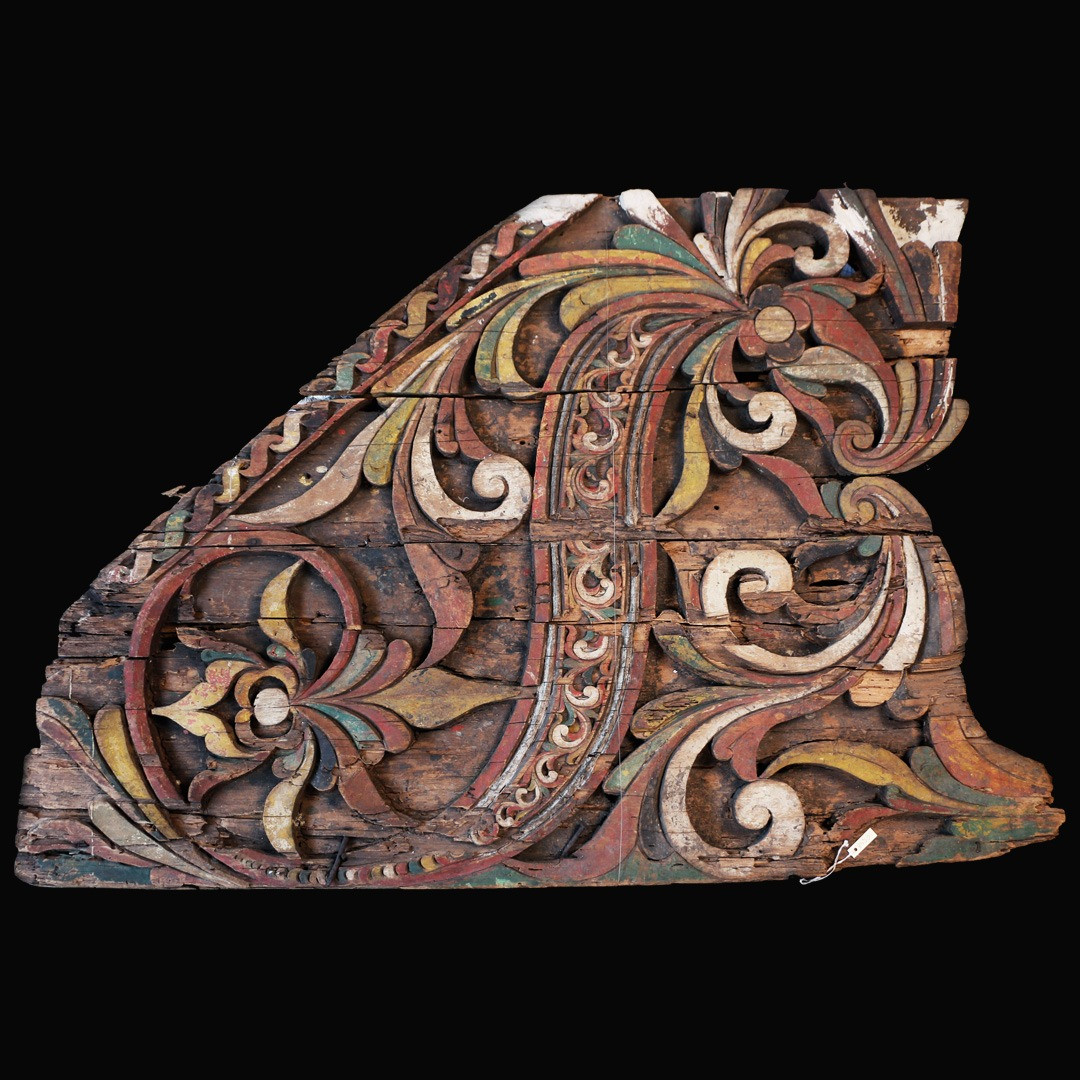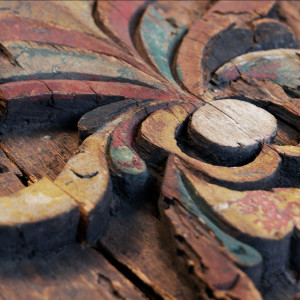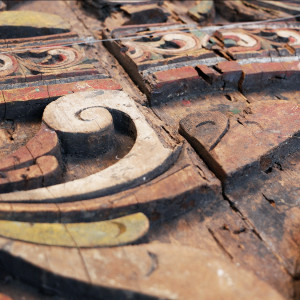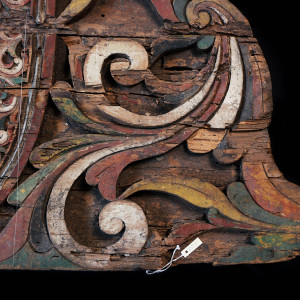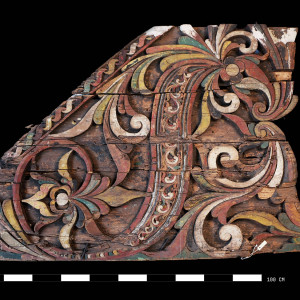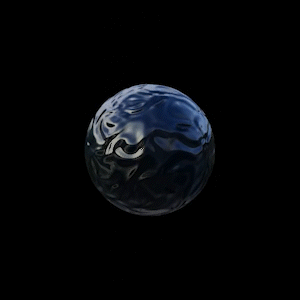Panolong/ beam end
Data currently unavailable
Artist
Data currently unavailable
Date
Data currently unavailable
Language Group
Maranao
Artist Collective
Data currently unavailable
Geographical Setting
Lanao del Sur
Provenance
Purchase
Making Classification
Data currently unavailable
Making Sub Classification
Data currently unavailable
Anthropological Class
Data currently unavailable
Museological Class
Data currently unavailable
Museological Sub Class
Data currently unavailable
Condition
polychrome paint chipping off, poor condition; has signs of wood disintegration
Material
Wood
Dimensions
48.00 x 31.80 x cm
Artist Statement
Data currently unavailable
Bibliography
Casino, Eric S. " Ats & Peoples of the Southern Philippines." (In Casal, et.al The People & Art of the Philippines. Los Angeles: University of California, 1981), pp. 171-172
Annotation
Panolong is the term used for the flange—extension of a beam of the torogan, the large house of wealthy Maranao families— that flares out into more or less a wooden triangle. The entirety of the two surfaces of the triangle is filled with relief in the style called okir by the Maranao. (The Tausug variant is ukkil.) Okir is a formal aesthetic tradition of relief carving, featuring continuous curvilinear lines that are as though a relay of waves of equal dimension. Maranao okir virtuosos have a sharp eye for line and form. It is the rare hand and mind who can execute relief carving without losing elegance in all parts of a complicated whole. Often, in the most elegant of panolong, a serpent like figure features centrally. This is the naga to the Maranao, derived from its Sanskrit equivalent. This South Asian mythic figure is absorbed into island Southeast Asian mythology, where it conflates with mysterious reptiles like the crocodile and the snake.
Licensing
The exclusive Intellectual Property Rights of the information contained in this website remains with the artist/s and the Cultural Center of the Philippines and is protected by the laws of the Republic of the Philippines. No part of this website may be reproduced, published, distributed, or transmitted in any public form or by any commercial means without prior written permission of the artist/s and CCP.
For permission and licensing requests, email vamd@culturalcenter.gov.ph.
Feedback
We are committed to learning more about our collections and updating the content of this website. Does this record contain inaccurate information or language that you feel we should improve or change? Please contact us at vamd@culturalcenter.gov.ph.
